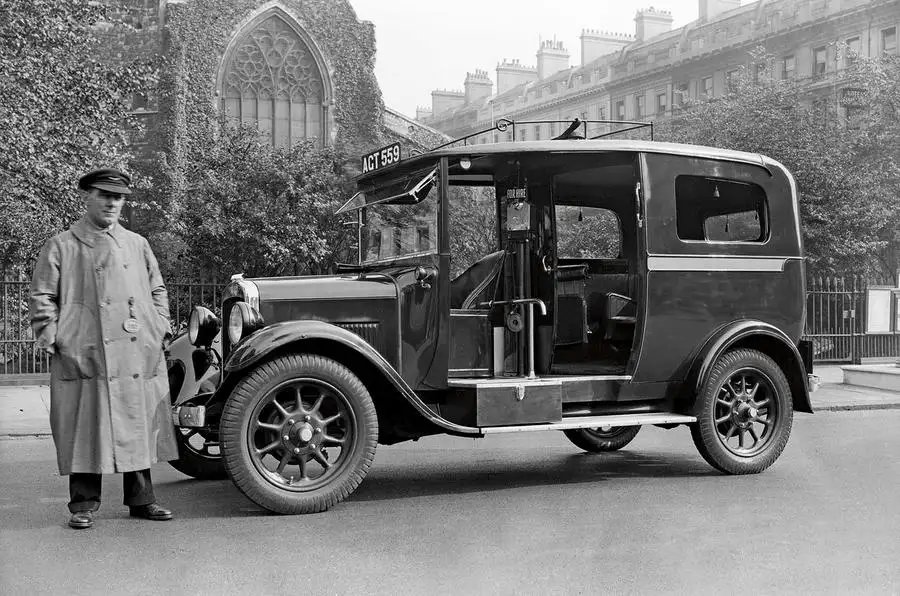The LEVC TX of modern London has a heritage stretching back to 1930, over six generations of taxi.
In 1925, a new Tory government extended the tariffs that had been introduced to pay for the war onto commercial vehicles. This made the dominant French Unic taxis intolerably costly, so dealer Mann & Overton asked Austin to return to the market with a new model.
Austin reused the chassis from its old 'heavy' Twelve car, keeping the 27bhp four-pot but regearing the four-speed gearbox and, to get a tiny turning circle, the steering.
Bodies (usually landaulet) then came from coachbuilders, their extra height over rivals earning the nickname 'high lot' - and favour among top-hat wearers.
As per the 1906 Conditions of Fitness, one side was open (awful on a wet, windy day) its horn was a squeezer and it had an external carburettor killer (oi, 'ands off!). The upright driving position gave amazing vision, combining with first-rate manoeuvrability to enable us to confidently drive into seemingly impossible spaces.
Performance was sufficient for town traffic - but "amusing" when we tried it at Brooklands.
The hefty weight of 1420kg or so didn't help there, although it did give the handling a planted feel. The leather-lined seating area was nice - if you could ignore the metalwork's constant vibration.
It's quite something how little has changed in the past 86 years, but also how much really has.
Lancia's Aprilia masterpiece
Lancia’s Augusta of 1933 had “made many friends in this country”, so we were excited for its Aprilia successor. The pillarless saloon set a new record for aero, at 0.47Cd, which combined with an “astonishingly low” weight of 890kg, thanks to its unitary body (a 1922 Lancia invention), for “decidedly brisk” performance, despite a humble 45bhp coming from the 1.4-litre V4 – an engine so smooth and refined that it felt like a six.
Another rarity was its fully independent suspension, which gave it both “exceptional comfort of riding” and “mostsatisfactorily safe-feeling” handling. It was Vincenzo Lancia’s final car – and what a car.
UK government fails to deliver on road-building promise
With the effects of the 1931 European banking crisis fading and the number of cars in Britain hitting 2.5 million, in 1935 the government decided that it was time for a massive road-building plan, and the Ministry of Transport announced a £100 million fund.
But by 1937, when another 500 vehicles were joining the traffic each day, we could see very little concrete (ahem) progress. It turned out just £6.45m had actually been spent in the first two years. Far more was going into national armament, we noted. In hindsight, on balance, a good thing…
Nouvelles connexes

